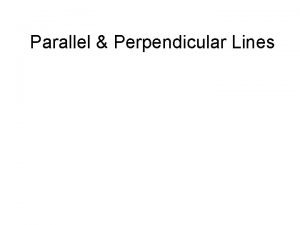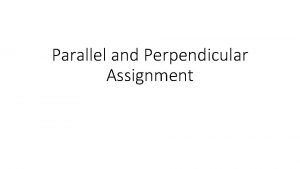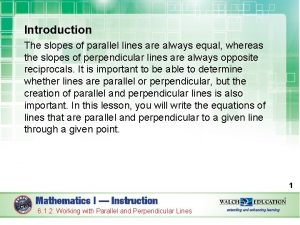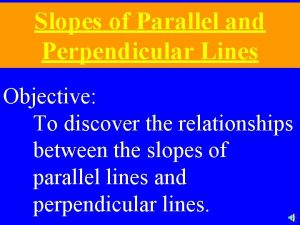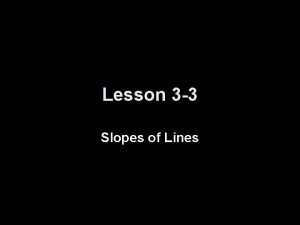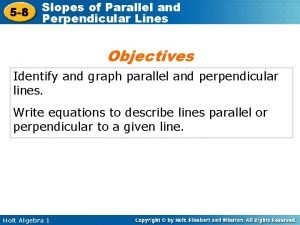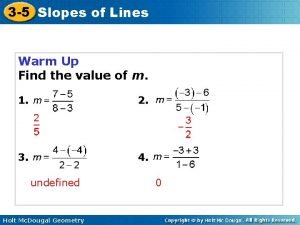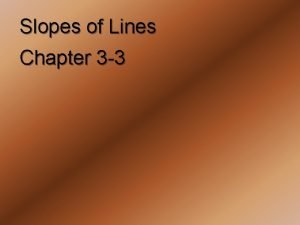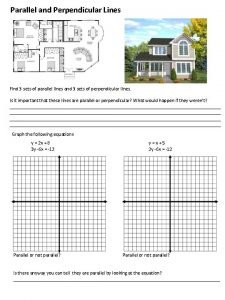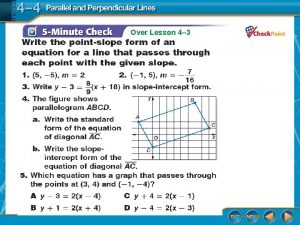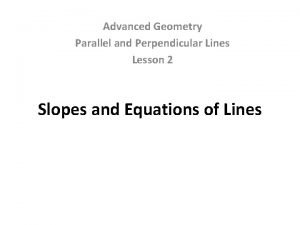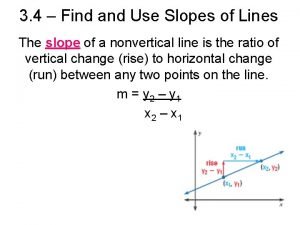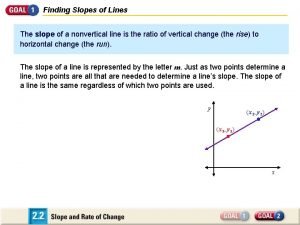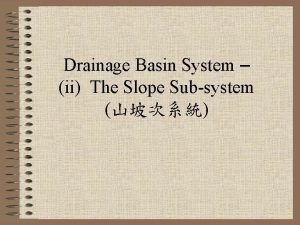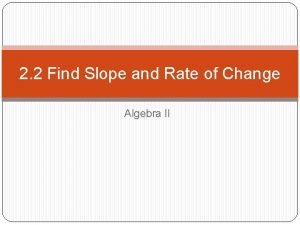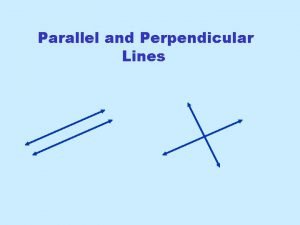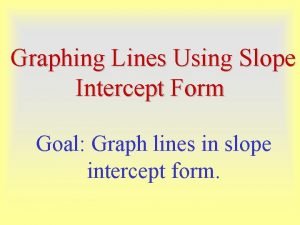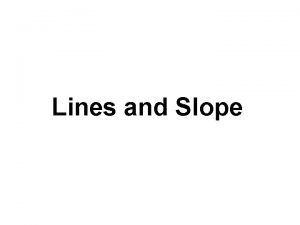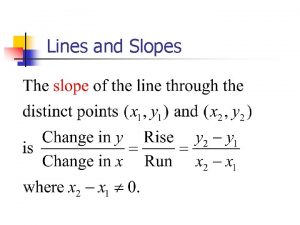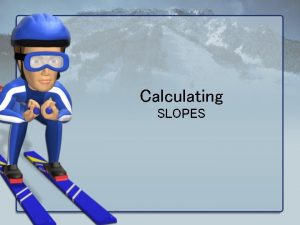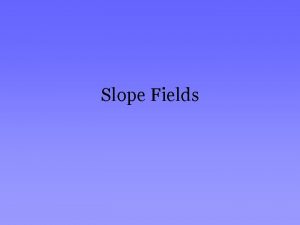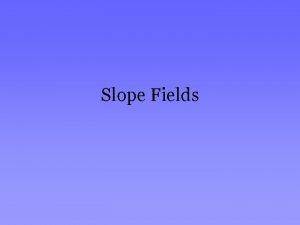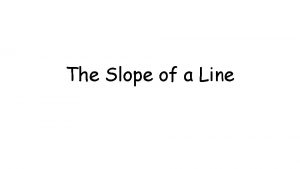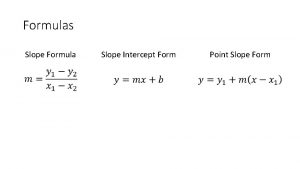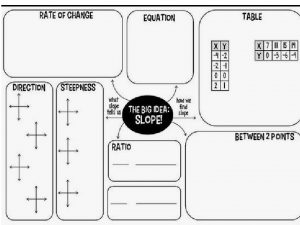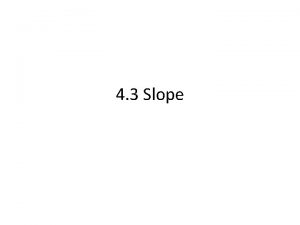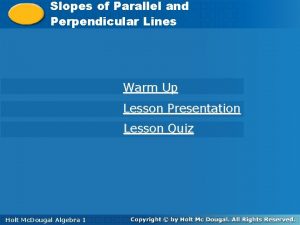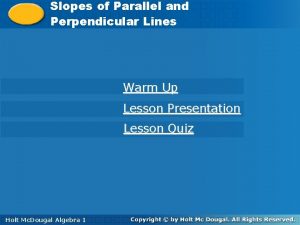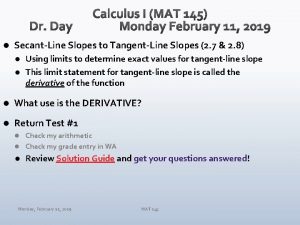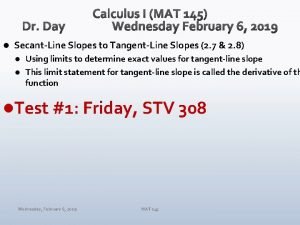3 3 Slopes of Lines Slope Example 1


















- Slides: 18

3. 3 Slopes of Lines

Slope

Example 1 a

Example 1 b

Example 1 c

Example 1 d


Example 2: Find the Slope of the line that contains the given points a. (-3, 4), (2, 1) b. (-1, -3), (6, -3) c. (2, -4), (5, 2) d. (3, 5), (3, 2)

Rate of Change • Slope can be interpreted as a rate of change, describing how a quantity y changes in relation to quantity x. The slope of a line can also be used to identify the coordinates of any point on the line.

Example 3 • In 2000, the annual sales for one manufacturer of camping equipment was $48. 9 million. In 2005, the annual sales were $85. 9 million. If sales increase at the same rate, what will be the total sales in 2015?

Example 4 • Between 1994 and 2000, the number of cellular telephone subscribers increased by an average rate of 14. 2 million per year. In 2000, the total subscribers were 109. 5 million. If the number of subscribers increases at the same rate, how many subscribers will there be in 2010?

Parallel and Perpendicular lines • You can use slopes of two lines to determine whether the lines are parallel or perpendicular. Lines with the same slope are parallel.


Example 5 • Determine whether FG and HJ are parallel, perpendicular, or neither for F(1, – 3), G(– 2, – 1), H(5, 0), and J(6, 3). Graph each line to verify your answer.

Example 5 • Determine whether FG and HJ are parallel, perpendicular, or neither for F(1, – 3), G(– 2, – 1), H(5, 0), and J(6, 3). Graph each line to verify your answer.

Example 6 • Determine whether AB and CD are parallel, perpendicular, or neither for A(– 2, – 1), B(4, 5), C(6, 1), and D(9, – 2)

Example 7 • Graph the line that contains Q(5, 1) and is parallel to MN with M(– 2, 4) and N(2, 1).

Example 8 • Determine which graph represents the line that contains R(2, – 1) and is parallel to OP with O(1, 6) and P(– 3, 1). A. B. C. D. none of these
 How to find perpendicular slope
How to find perpendicular slope Slopes of parallel and perpendicular lines
Slopes of parallel and perpendicular lines Slopes of parallel and perpendicular lines assignment
Slopes of parallel and perpendicular lines assignment Parallel lines slope
Parallel lines slope Two lines are parallel if their slopes are
Two lines are parallel if their slopes are 3-3 slopes of lines answer key
3-3 slopes of lines answer key 3-8 slopes of parallel and perpendicular lines
3-8 slopes of parallel and perpendicular lines 3-5 slopes of lines
3-5 slopes of lines 3-3 slope of lines
3-3 slope of lines 3 sets of parallel lines
3 sets of parallel lines Slopes of parallel and perpendicular lines lesson 8-1
Slopes of parallel and perpendicular lines lesson 8-1 Lesson 2-4 parallel and perpendicular lines
Lesson 2-4 parallel and perpendicular lines Find and use slopes of lines
Find and use slopes of lines Slope review classifying slope
Slope review classifying slope Slope decline
Slope decline Point-slope form definition geometry
Point-slope form definition geometry Slope review classifying slope
Slope review classifying slope Parallel and perpendicular lines
Parallel and perpendicular lines Graphing lines using slope intercept form
Graphing lines using slope intercept form
